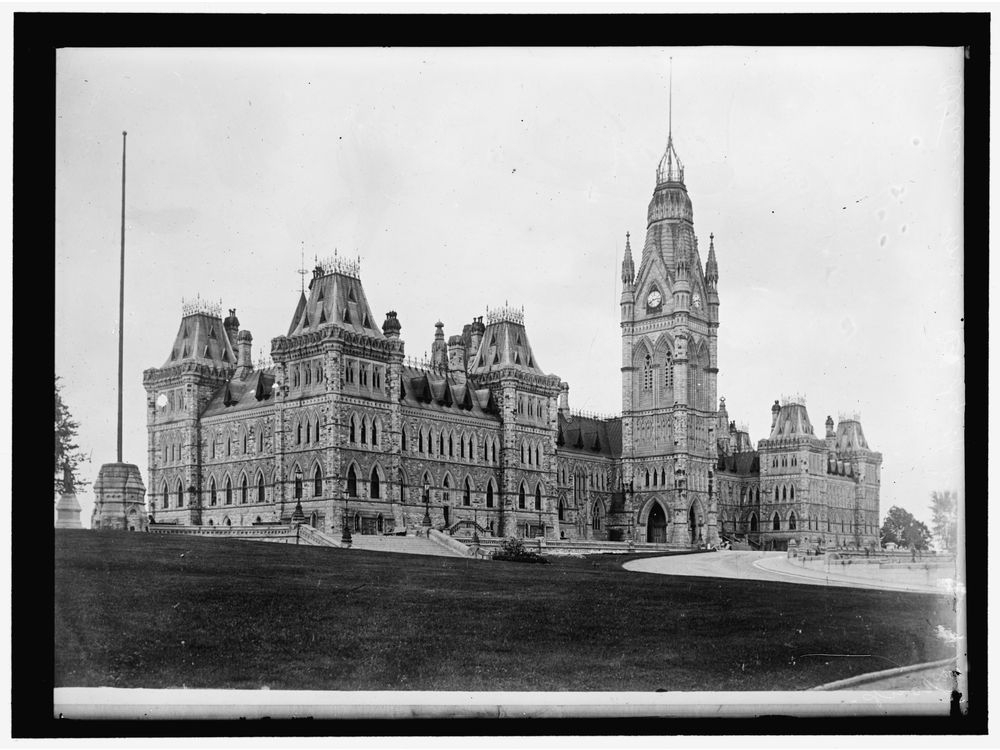
Americans were confronted with an extraordinary image this week: the mostly demolished East Wing of the White House , torn down to add a 90,000-square-foot ballroom to the historic building, a pet project of President Donald Trump that has moved at breakneck speed and prompted widespread complaints.
A stark contrast to this pace can be found in the United States’ northern neighbour. Works to upgrade and modernize Canada’s Parliament buildings – first built more than a century ago – are underway in a process that may take some three decades, with initial plans approved in 2001 and the complex’s Centre Block not expected to be reopened until 2032.
HOK, the lead design architect for the Centre Block upgrade, has called the project – which has an overall estimated price tag of up to $3.6 billion – “the largest and most complex rehabilitation ever undertaken in Canada.” It says workers have removed or protected more than 20,000 heritage items such as paintings, murals, stained-glass windows, woodwork and sculptures, some of which will be restored, and dug 75 feet to construct new visitor facilities that will minimally impact the appearance of the original buildings.
Salman Soleimani-Dashtaki, an adjunct professor in the department of civil engineering at the University of British Columbia in Vancouver, said he was “a bit surprised” at the pace of the White House renovation in comparison to the Canadian approach.
“There are a lot of challenges, especially when you’re dealing with a building that’s extremely old and has a lot of value – preservation of that becomes a very important factor,” he said of the Canadian project, adding that its engineers’ “main, major goal” was to upgrade the Parliament buildings to meet modern standards without significantly affecting their appearance.
Canada’s Parliament complex was built in the 19th century. The Centre Block – where the House of Commons and Senate are traditionally located – and the precinct’s well-known Peace Tower were built between 1916 and 1928 after the previous structure was damaged in a fire. The White House was built in the late 18th century, while the East Wing was added in 1942.
“When a building becomes such an iconic structure in the country, any alteration that you do to the building runs a lot of risks, right?” Soleimani-Dashtaki said. “It becomes part of the history.”
He added that the solutions developed, particularly work to improve the structures’ earthquake resistance, were “an engineering wonder of the history of Canada” designed to save the buildings for future generations.
“Why it’s taking so long is because we know it’s going to be an example of a very extraordinary heritage restoration project,” he said. “I think that great things take a long time to build.”
A first version of a long-term plan to improve the parliamentary precinct was approved in 2001 and updated about six years later, to be executed in five-year increments – a considerably more deliberate pace than the Trump administration’s approach to the construction of the White House ballroom, in which demolition of the East Wing occurred within months of the project’s official announcement in July.
While Trump pledged at the time that the ballroom would not “interfere” with the existing building, White House officials said Tuesday that a full-scale teardown of the East Wing was expected. On Wednesday, the president said the privately funded project would cost $300 million, up from his original claim of $200 million.
The work at the White House also started without public review processes, according to the National Trust for Historic Preservation, a nonprofit created by Congress to help preserve historic buildings.
The lengthy timeline involved in the Canadian project has not been without criticism. In 2010, a report from the country’s auditor general found that planning had been slowed down by fragmented bureaucratic processes, with various agencies and branches of government needing to be consulted and provide approvals, which “ultimately results in project delays and inefficient use of resources.”
By 2023, though, the auditor general’s office found that much of the project had been effectively managed. In its earlier report, it had stressed the importance of getting the process right for the sake of preserving a national landmark.
RECOMMENDED VIDEO
“Canadians are attached to the Parliament buildings,” the report noted. “Surveys found that they see them as symbols of Canada’s history and tradition, and of democracy and freedom. Like official residences, the buildings are part of Canada’s heritage and belong to all Canadians.”
David Lieberman, architect and associate professor emeritus of the University of Toronto, said the sudden demolition of the East Wing without detailed review was “tragic.”
“Is the Canadian renovation too slow? Yes,” he said. “But does this mean that the budget is spread over a number of years? Does this mean that things are being done properly? Probably.
“Maybe the East Wing does need a major retrofit – the White House has been rebuilt several times, of course,” he said, referring to previous renovations. But he added that extensive engineering and design consultations would normally be undertaken before initiating a project of this magnitude.
The U.S. and Canada are among many countries that have grappled with how to make changes to landmark government buildings. The Trump administration argues that the White House’s current capacity to host events is too small – in a Tuesday statement, it called the ballroom a “necessary addition” in keeping with a “storied history of improvements and additions from commanders-in-chief.”
Britain has debated for years, without significant progress, the issue of how to address problems such as the presence of asbestos and frequent fires in its official buildings including the Palace of Westminster, the Guardian reported. Australia opened its new Parliament House in 1988, after about 13 years from planning to completion, converting the original into a museum, to address the need for more space.
In Canada, the prime minister’s official residence has also been a cause for concern. The building, constructed in the 1860s, has not been used for years and was officially closed in 2022 for health and safety reasons, while successive governments have been unable to decide on a solution for its future, Canadian media reported.





